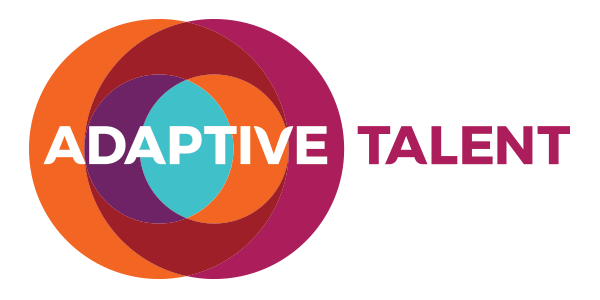From the article:
The uncertain economic environment has placed tremendous personal and workplace pressure on employees. Corporate Executive Board (CEB) analysis has shown a drastic decline in employee engagement since the start of the economic downturn, with the number of disengaged employees having risen dramatically from 1 in 10 in 2006 to 1 in 3 in the first quarter of 2009.
With financial instability fuelling growing demands in many areas of employees’ lives, it comes as no surprise that leveraging work-life balance practices provides employees with much needed flexibility and can greatly improve employee engagement overall. In this volatile economic climate, with downsizing and restructuring efforts having left employee morale low and workloads heavy, creating opportunities that can improve employee work-life balance can also have a tangible bottom-line impact for the business. Implementing effective work-life balance initiatives, however, can be challenging, and is directly linked to how well today’s workforce development executives can identify and provide the right mix of benefits that are highly valued by the workforce.
The Business Case for Work-Life Balance
CEB research of more than 160,000 employees across industries and geographies has identified an interesting correlation between work-life balance and today’s economic environment. While work-life balance has risen on employees’ priority lists, their overall satisfaction with achieving it has fallen. CEB has been surveying employees throughout the downturn, and as of the second quarter of 2009, employees now rank work-life balance third only behind compensation and future career opportunities in terms of employer attributes that are of importance to them, compared to a ranking of sixth in 2006. Yet, today, the study shows that only 30 percent of employees are satisfied with their work-life balance, as compared to 53 percent prior to the downturn.
These trends directly affect companies’ bottom lines in the form of decreased employee productivity. CEB’s research also shows that more than 30 percent of employees miss time from work in order to meet their work-life needs. CEB’s study has shown that effective work-life balance offerings can bolster lagging employee effort levels. Specifically, surveys show that employees who feel they have a better work-life balance work 21 percent harder than those who don’t, which can dramatically improve the performance of organizations in the current economic environment. In addition, employees who are satisfied with their work-life balance are 33 percent less likely to leave their current organization than their peers who are not satisfied. While turnover might not be at the top of the agenda for most organizations right now, improving work-life balance can also result in better retention when the economy rebounds.
The Common Challenges for Organizations
While it is clear that improving employee work-life balance has real value to organizations, defining and improving the work-life balance of employees can be challenging. To better understand how organizations can most effectively deliver and maximize ROI in this area, CEB analyzed the most essential elements of employee work-life balance and determined the key lies in creating the right work-life proposition (WLP). The WLP is a set of work-life practices that employees perceive as the value they gain through employment in the organization. This includes six categories: work time, work location, family, development, services and health.
The challenge for employers, however, is that while an effective WLP demonstrates compelling benefits, most organizations struggle to successfully design and deliver a valuable one. The three most common root causes of why organizations fail are:
- Few employees are aware of the work-life practices offered by their employer.
- Most work-life practices are not targeted at the most important drivers of work-life balance.
- Even fewer employees actually participate in the work-life practices offered by their employer.
While these challenges seem difficult to overcome, there is a series of cost-effective strategies that the most innovative organizations are using to effectively improve the work-life balance of their employees.
Solution 1: Give the Gift of Time
To better achieve a work-life balance for their employees, organizations have continuously modified the work-life practices they offer — yet few organizations have effectively prioritized the work-life practices that matter most to employees. According to CEB’s 2008 report “Building and Managing a Global Work Life Balance,” of the employees who are informed of their organization’s work-life portfolio, less than 25 percent report that their organization offers the work-life practices that align with their preferences. Companies must ensure that their initiatives target the activities that most improve the work-life balance of their employees. After examining more than 32 different strategies, CEB found that work-life balance practices related to time management, including flexible work schedules, appropriate workloads and predictable working hours, are much more important to improving employees’ work-life balance than providing services such as telecommuting, gyms or on-site medical facilities.
It’s important to keep in mind as well that the similarities in terms of work-life balance preferences for various employee segments are much greater than the differences. While a great deal of speculation has been made concerning generational differences in the workplace, CEB research has found that there is surprisingly little difference in work-life balance preferences when looking at employees by function, age, industry, parental status or even gender. There is, however, one notable segment for which work-life preferences do vary: high-potential employees (HIPOs), or those who companies have designated for future leadership positions. HIPOs place dramatically more value on telecommuting technology to stay connected with the work they do and crave the always-on access that this connectivity allows. Interestingly, they are willing to give up predictability within their day and lower the barriers between their professional life and work-life balance to get this connectivity.
Solution 2: It’s Not What They Use, It’s What They Know About
Even when employers offer work-life practices to employees that align with their preferences, many organizations find it difficult to raise awareness about available programs and therefore fail to realize returns on their work-life investments.
According to CEB’s aforementioned 2008 report, less than one-third of employees are actually aware of the work-life practices offered by their organizations. Therefore, another key mandate for employers is to focus on effectively communicating their work-life offerings to employees. In fact, awareness of work-life balance practices is more important than the actual consumption of the practices themselves for improving employee engagement. Increased employee awareness of the WLPs offered by a company increases employees’ perceptions of whether or not they have a good work-life balance by 35 percent.
CEB tested a variety of strategies that organizations use to improve the awareness of the work-life balance practices they offer. Surprisingly, the most important factor is not the communication from human resources or senior leadership, but when employees actually see their peers take advantage of the work-life practices being offered by the organization. Organizations can therefore drive higher awareness of the WLP by simply ensuring that the information about work-life practices is accessible and frequently communicated and uses real examples of employees using the services offered.
Solution 3: Use Peers to Drive Program Participation
When employees participate in the work-life balance programs offered by their organization, their perception of whether or not they have a good work-life balance can increase by 29 percent. However, less than 50 percent of employees report ever having used any of the work-life practices offered by their organization. While building awareness of work-life balance practices is certainly critical, the lack of participation in programs creates a challenge for HR executives when CFOs start to question the logic of offering expensive perks and benefits to their employees. Much like building awareness, the most effective way to get employees participating in the work-life balance programs offered by their organization is for them to see their peers using the services.
While employers should certainly employ strategies to drive awareness and increase consumption in order to maximize returns on their work-life programs, they should know that efforts to drive awareness of practices also drive consumption. Although this will help organizations increase their overall effectiveness in delivering the WLP, executives should be aware that increased consumption will also raise the cost of work-life practices for the organization.
WLP: Not to Be Ignored
Most CFOs were quick to cut work-life balance programs at the start of the economic downturn because of a perceived lack of impact on the outcomes that inflect business performance. In reality, these programs can drive real business value when designed correctly. To effectively enhance employee work-life balance, the best organizations will build work-life practices around programs that create time flexibility for their employees, invest in building awareness of their programs and leverage their employee base to drive participation in programs, rather than trying to drive participation through HR.
Adaptive Talent is a talent consultancy designed to help organizations achieve amazing results and ongoing adaptability. Founded in 2008 and based in Vancouver, Canada we offer retained search, assessments, total rewards consulting, training, leadership coaching and development programs, and culture & organizational development consulting.

